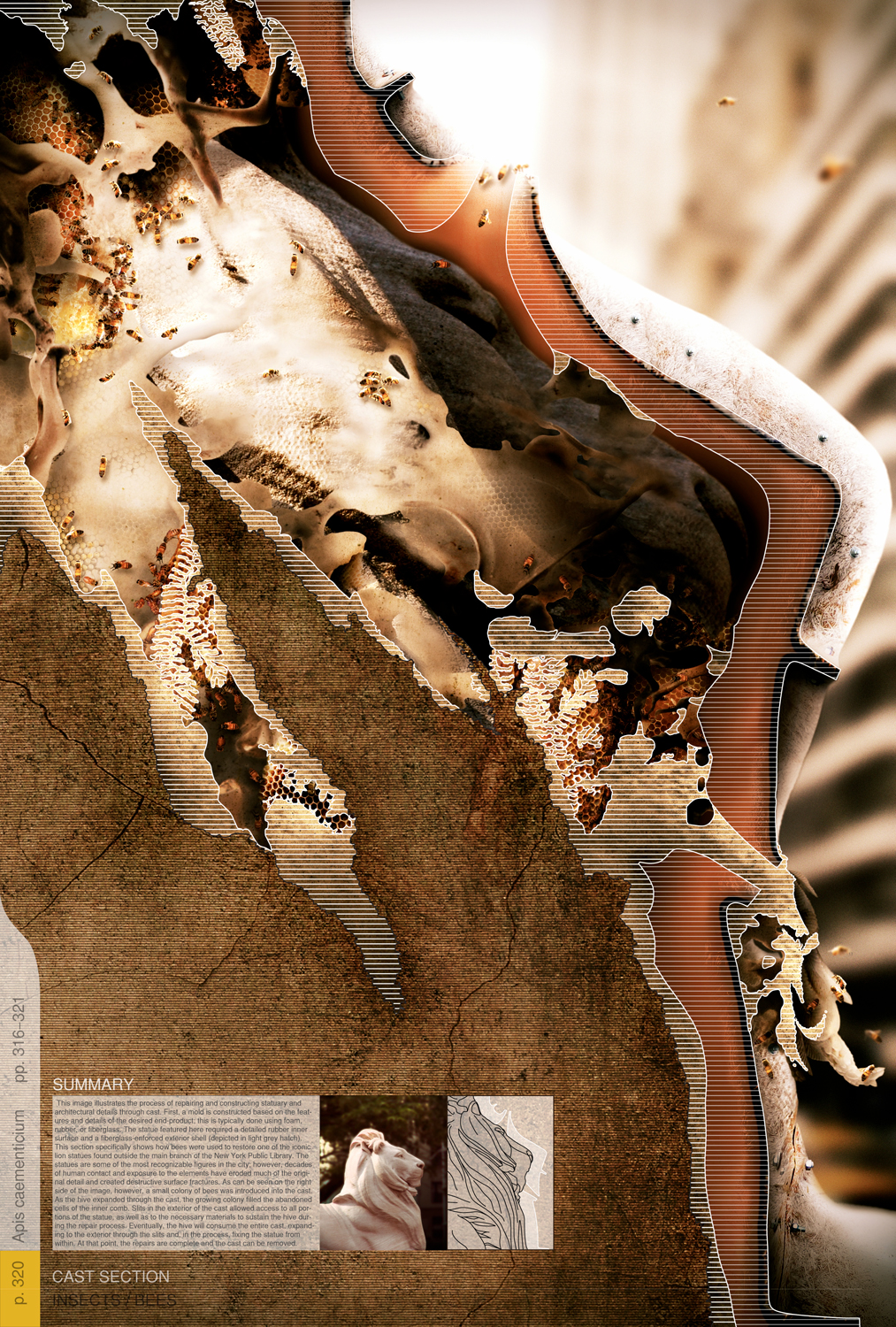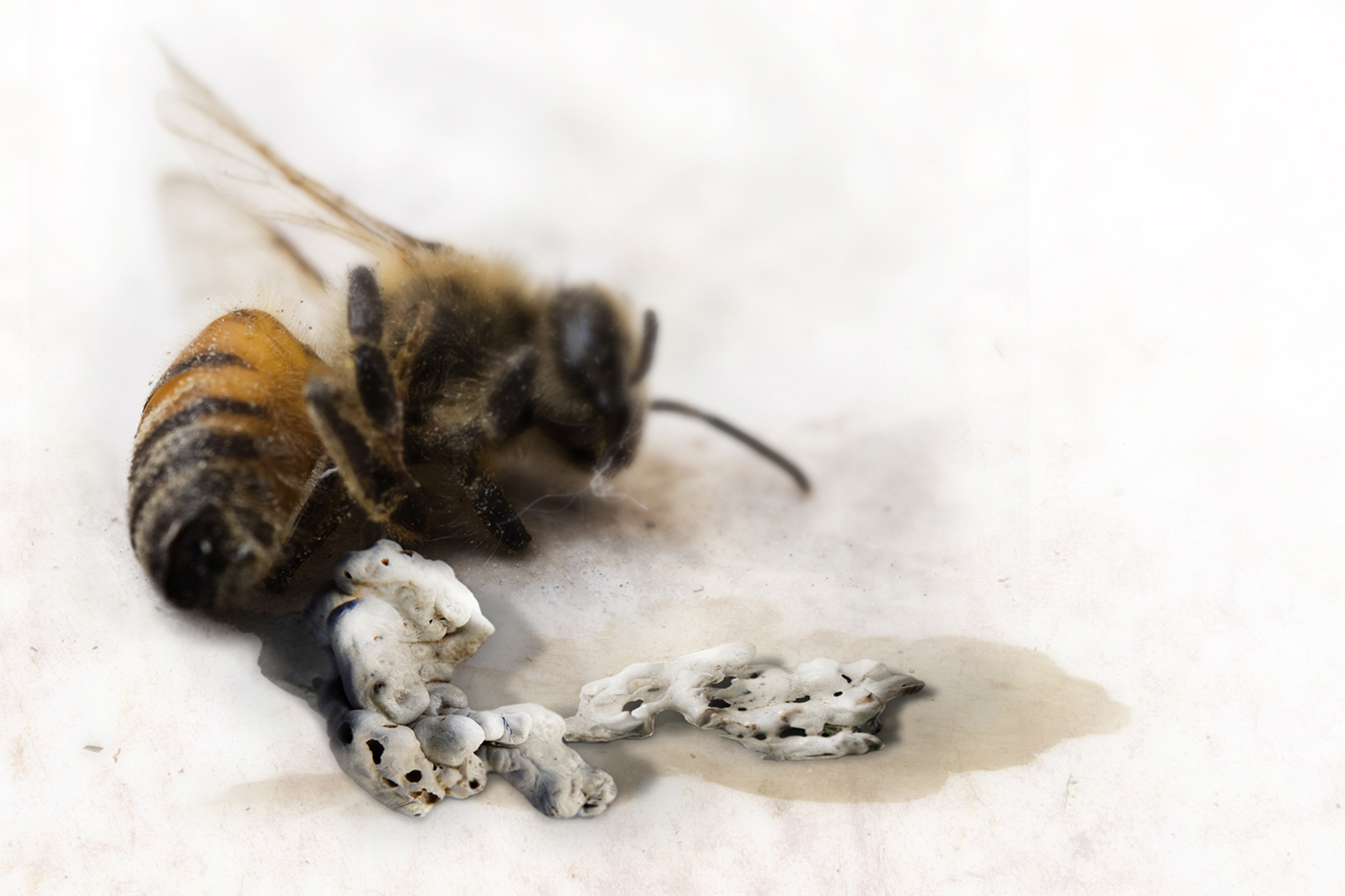Concrete Honey
Counter Productive: A collaboration between Geoff Manaugh & John Becker
Text by Geoff Manaugh
Images by John Becker
Initially inspired by a somewhat willful misreading of a project published by the CCA in Montréal under the title "Bees Make Concrete Honey," we've imagined and illustrated a series of science-fictional scenarios in which a new bee species, called Apis caementicium—cement bees—could be deployed throughout the city to repair statues and fix architectural ornament, and even to produce whole, free-standing structures, such as cathedrals.


The bees would be given an initial form to work within. Then, buzzing away inside this mold or cast, and additively depositing the ingredients for bio-concrete on the walls, frames, or structures they're attached to, the bees could 3D-print new architectural forms into existence.
This includes, for example, in the image below, the iconic stone lions outside the New York Public Library, damaged by exposure and human contact, but now fixed from within by concrete bees. You could think this as a kind of organic caulking.

But, of course, tidy plots such as these invariably spin out of control and things don't go as planned.
Feral Printers
The bees, of course, eventually escape: first just a few here and there, but then an upstart colony takes hold. Within a few years, as they reproduce and thrive, and as the colonies grow, the city becomes aware of the scale of the problem: rogue 3D-printing bees have infested various parts of the city.

They print where they shouldn't print and, without the direction of their carefully made formwork and molds, what the bees print often makes no sense.
They print on signs and phone poles; they take over parks and gardens where they print strange forms on flowers, sealing orchids and roses in masonry shells.

Tiny fragments of concrete can soon be seen on plants and door frames, beneath cars and on chain-link fences, coiling up and consuming the sides of structures where they were never meant to be, like kudzu; and, of course, strange bee bodies are found now and again, little concrete-laden corpses lying in the grass of backyards, in parking lots, and on rooftops.

Striking creatures, augmented and extraordinary, dot the very city they've also beautified and improved, where they once printed church steeples and apartment ornament, where they fixed cracked walls, statues, and sidewalks.
Of course, other, more adventurous or simply disoriented bees make their way further, hitching inadvertent rides in the holds of planes and cargo ships, mistakenly joining other hives then shipped around the world.
The bees are soon found in Europe, China, and, especially—for reasons never quite clear to materials scientists—India, where, in the image taken below, they can be seen adding unnecessary ornamentation to a temple in Rajasthan. Swarming and uncountable, they busily speck the outside of the building with bulbous and tumid additions no architect would ever have planned for.

As the bees speciate yet further, and their concrete itself mutates—in some cases, so hard it can only be removed by the toughest drills and demolition equipment, other times more like a slow-drying sandstone incapable of achieving any structure at all—this experiment in animal printheads, these living 3D printers producing architecture and industrial objects, comes to end.
A Bee Amidst The Machines
Designers learn from the, in retrospect, obvious mistakes that led to these feral printers, turning back to their more easily controlled inorganic factories and industrial processes. But, even then, on quiet spring days, a tiny buzzing sound can occasionally be heard from inside the machines, and whole assembly lines come shuddering to a halt. There, within the gears, just doing what it's used to—what we made it do—a tiny 3D-printing bee has taken root, leaving errant clumps of concrete wherever it alights.




